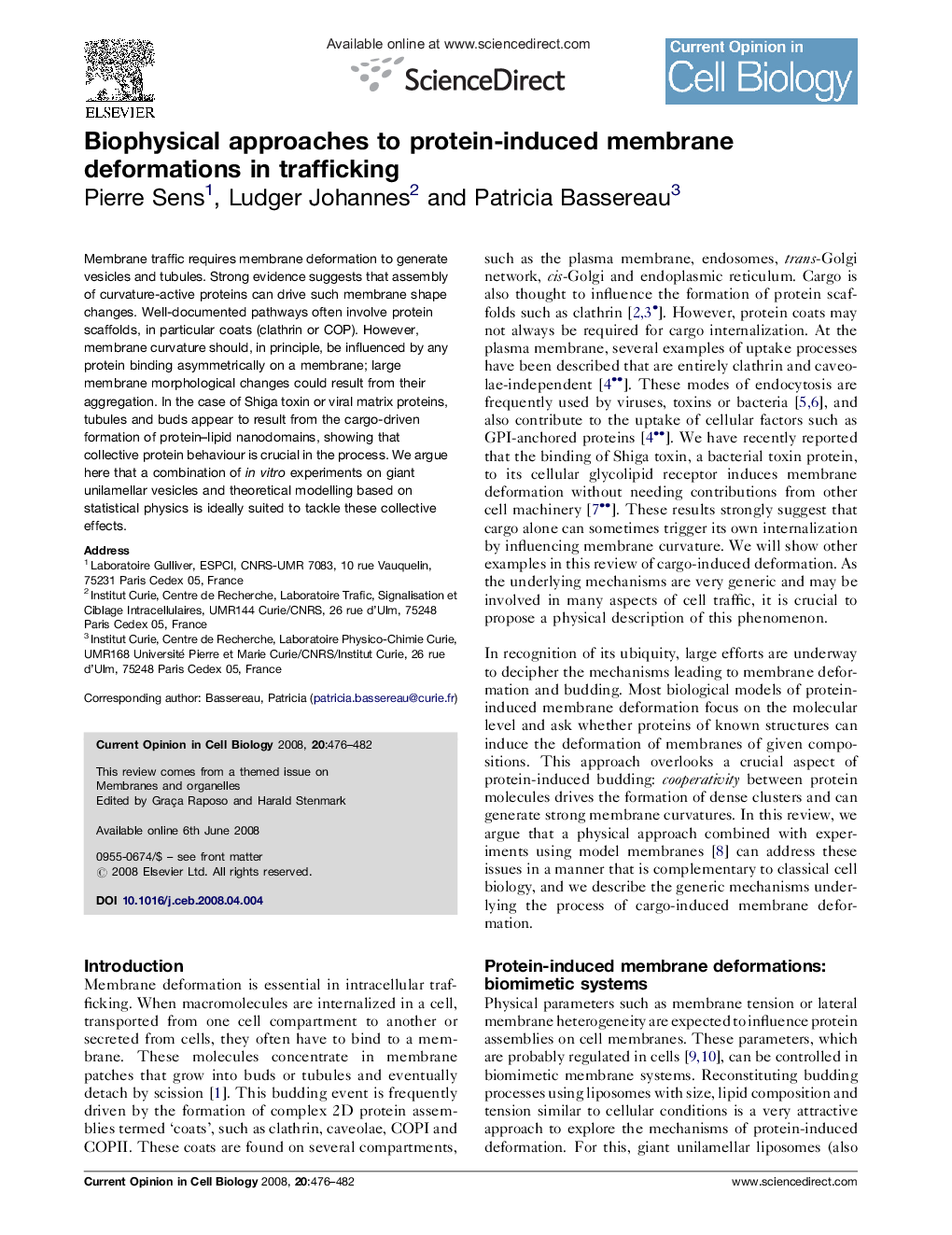| Article ID | Journal | Published Year | Pages | File Type |
|---|---|---|---|---|
| 10929392 | Current Opinion in Cell Biology | 2008 | 7 Pages |
Abstract
Membrane traffic requires membrane deformation to generate vesicles and tubules. Strong evidence suggests that assembly of curvature-active proteins can drive such membrane shape changes. Well-documented pathways often involve protein scaffolds, in particular coats (clathrin or COP). However, membrane curvature should, in principle, be influenced by any protein binding asymmetrically on a membrane; large membrane morphological changes could result from their aggregation. In the case of Shiga toxin or viral matrix proteins, tubules and buds appear to result from the cargo-driven formation of protein-lipid nanodomains, showing that collective protein behaviour is crucial in the process. We argue here that a combination of in vitro experiments on giant unilamellar vesicles and theoretical modelling based on statistical physics is ideally suited to tackle these collective effects.
Related Topics
Life Sciences
Biochemistry, Genetics and Molecular Biology
Cell Biology
Authors
Pierre Sens, Ludger Johannes, Patricia Bassereau,
